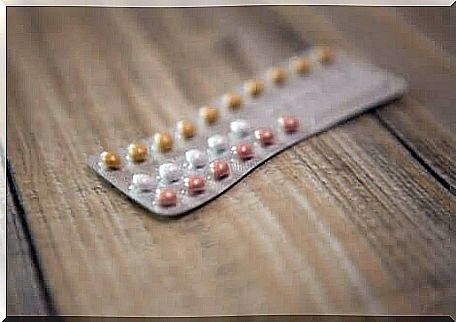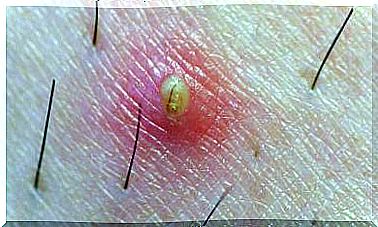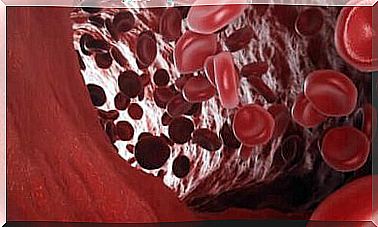What Are The Treatments For Menorrhagia?
The treatment of menorrhagia should be approached on the basis of the particularities of each case. Indeed, all women do not react to the same treatments. Here are some options available.

In order to define the treatments for menorrhagia, the first thing that healthcare professionals look for is to resolve the origin of the menorrhagia. This disorder is defined as an increase in the amount of menstrual bleeding or its excessive prolongation.
The clinical form is usually associated with an alteration of the menstrual rhythm, which would be metrorrhagia. In this case, the more correct term is menometrorrhagia . Either way, the treatments coincide.
What is metrorrhagia? What are its causes ?
Strictly speaking, metrorrhagia refers to periods of more than 80 milliliters in a woman during her period. This is the technical limit of concrete measures to establish this pathology.
As for the days considered to speak of prolonged bleeding, there is a scientific debate. Typically, almost all diagnostic protocols around the world establish more than a week as abnormal.
The causes of this disorder can be summarized as follows:
- Hormonal imbalance: There are many hormones involved in the menstrual cycle. A small imbalance of one of them is therefore enough to cause more or less bleeding. It could be a problem with the thyroid, estrogen, progesterone, or prolactin.
- Uterine myomas : The presence of myomas in the uterus is a cause of bleeding. Myomas are benign tumor growths of muscle in the wall of the organ. They deform the surface of the endometrium and cause it to bleed more.
- Anticoagulation: Women suffering from bleeding disorders or who are taking anticoagulant therapy – for other pathologies – may have very heavy bleeding. They even run the risk of marked iron deficiency anemia.
- Perimenopause: When a woman enters the age of the end of menstrual cycles, rhythm changes are common. This then causes changes in the amount of menstrual bleeding, going through phases of amenorrhea to times when the blood is abundant and does not clot properly. For many women, it’s the start of menopause.

What are the natural treatments for menorrhagia?
Before discussing the medicinal means of treating menorrhagia, we want to mention some alternatives for mild cases. However, a health professional should always be consulted to give his approval on these kinds of natural methods. These are generally complementary to other medical therapies.
Hydration
Menorrhagia causes dehydration by the loss of fluids that go with the blood. Mainly at the onset of menstruation, women with this disorder should increase their water intake.
The benefit will be greater with isotonic drinks. In fact, isotonic drinks have the same concentration of electrolytes as blood. This prevents silent dehydration due to poor replenishment.
Special diet for anemia
A complication related to menorrhagia is anemia. The loss of iron through bleeding leads to forms of iron deficiency in red blood cells. This will cause extreme fatigue syndrome, hair loss, tachycardia, and pale skin.
It is therefore recommended to follow a diet abundant in iron and vitamin C. These two components help to replace the losses caused by the bleeding. For example citrus fruits, broccoli, red meat and spinach are excellent.
On the other hand, it is essential to carry out medical checks in case of anemia. It must actually be corrected, either through food or with the use of pharmacological supplements, in order to reach the hemoglobin levels considered to be normal.
Pharmacological treatments for menorrhagia
Once the doctor has assessed the causes of the menorrhagia, he considers the various treatment options. He can prescribe contraceptive methods that help regulate the cycle. Or the use of certain analgesics and anti-inflammatory drugs with a special action on the female reproductive system.
Let’s take a closer look at the various forms of menorrhagia treatments:
- Contraceptives: Hormones used in contraceptives have the ability to regulate the menstrual cycle. This then helps women suffering from menorrhagia because they decrease the amount of blood evacuated during each period. But it will depend on the option chosen by each woman. That said, beneficial results have been verified with pills, injectables and patches.
- Hormonal IUD: The intrauterine device with a release of hormones has been a paradigm shift in this method of contraception. This is the famous IUD, but impregnated with a hormone that intervenes in the menstrual cycle. It was designed in particular to help women suffering from irregular bleeding.
- Mefenamic acid: this is a nonsteroidal anti-inflammatory drug which, having a weak analgesic action on almost all tissues, has been shown to be an excellent calming agent for menstrual cramps. It has also been linked to the possibility of reducing the amount of bleeding in some women with menstrual pain syndromes.

When to see the doctor?
The symptoms of menorrhagia are usually identifiable because it is the increase in the amount of bleeding during menstruation. It is advisable to consult a doctor without allowing too much time to pass as the diagnostic process may be delayed.
In the long term if no treatment is given, there will be anemia as well as impaired quality of life due to the pain or lack of energy resulting from this disorder. Then, once the complementary methods have been carried out, the doctor will define the best option to regulate the cycle and correct the associated complications such as anemia.









